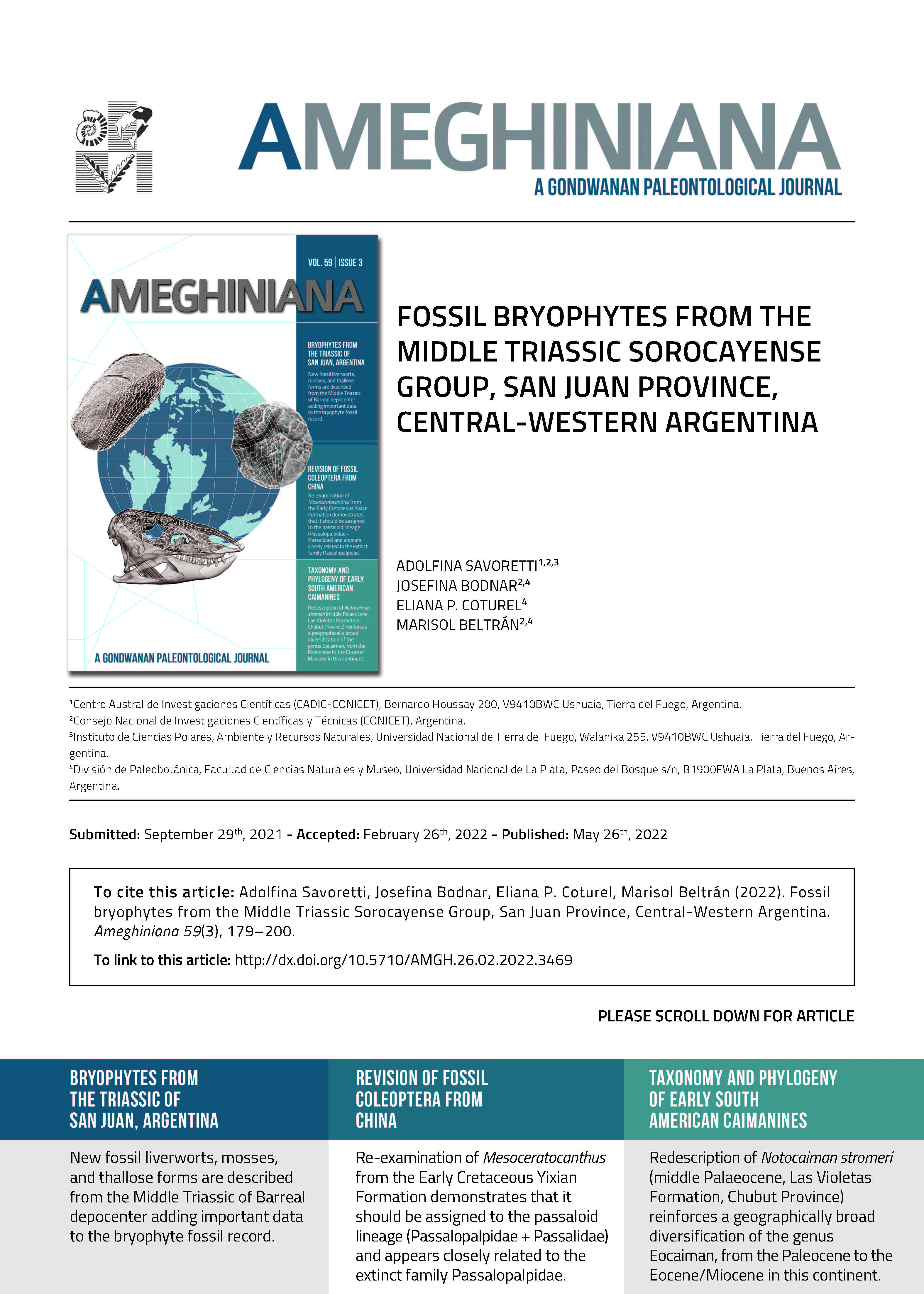FOSSIL BRYOPHYTES FROM THE MIDDLE TRIASSIC SOROCAYENSE GROUP, SAN JUAN PROVINCE, CENTRAL-WESTERN ARGENTINA
DOI:
https://doi.org/10.5710/AMGH.26.02.2022.3469Keywords:
Mesozoico, Cuenca Cuyana, Thallites, Ricciocarpolites, Ricciopsis, MuscitesAbstract
We describe fossil liverworts, mosses, and thallose forms of unknown affinity from the Barreal and Cortaderita formations (Sorocayense Group, Middle Triassic) in the Barreal depocenter, southwestern San Juan Province. The specimens are impressions-compressions of gametophytes and sporophytes, preserved in claystones, siltstones, and tuffaceous and bentonitic silty sandstones. The thallose forms consist of dichotomous simple thalli lacking evidence of a midrib and are assigned to the genus Thallites. Within the liverworts, we identified a new genus and two new species. Ricciellites unsaltoensis gen. et sp. nov. is characterized by thalli forming partial rosettes with distinct midrib, polygonal cells, air pores surrounded by a ring of cells, enclosed sporophytes, and ventral scales arranged in two rows. Ricciopsis cortaderitaensis sp. nov. has thalli forming rosettes, with distinct midrib, polygonal cells, and rhizoids. We also describe two types of acrocarpous mosses assignable to the genus Muscites. They are characterized by delicate unbranched axes with lanceolate unicostate leaves. Muscites sp. 1 is represented by several specimens arranged in a loose cushion, while Muscites sp. 2 corresponds to isolated specimens. Together, these fossils represent the first unequivocal evidence of mosses and liverworts for the Middle Triassic of Argentina. Given the scarcity of bryophyte megafossils of Triassic age worldwide (31 worldwide, three confirmed records for Argentina), these findings add significantly to the bryophyte fossil record.

Additional Files
Published
Issue
Section
License
Authors publishing in Ameghiniana have the option of making their article freely available online. Authors opting for the Open Access must pay a fee of $300 (US dollars) to cover article-processing costs and to ensure the article is made open access. Please contact the Production Team after the acceptance of your manuscript if you are interested in making your article Open Access. This option implies by default a license Creative Commons Attribution Non-Commercial-NoDerivs License (CC BY NC ND). If your funding institution requires a different licensing option please communicate this to the Production Team after the acceptance of your manusctipt.










